We use information collected through cookies and similar technologies to improve your experience on our site, analyze how you use it and for marketing purposes.
Your privacy settings
We and our partners use information collected through cookies and similar technologies to improve your experience on our site, analyze how you use it and for marketing purposes. Because we respect your right to privacy, you can choose not to allow some types of cookies. However, blocking some types of cookies may impact your experience of the site and the services we are able to offer. In some cases, data obtained from cookies is shared with third parties for analytics or marketing reasons. You can exercise your right to opt-out of that sharing at any time by disabling cookies.
Manage Consent Preferences
Necessary
Always ON
These cookies and scripts are necessary for the website to function and cannot be switched off. They are usually only set in response to actions made by you which amount to a request for services, such as setting your privacy preferences, logging in or filling in forms. You can set your browser to block oralert you about these cookies, but some parts of the site will not then work. These cookies do not store any personally identifiable information.
Analytics
These cookies and scripts allow us to count visits and traffic sources, so we can measure and improve the performance of our site. They help us know which pages are the most and least popular and see how visitors move around the site. All information these cookies collect is aggregated and therefore anonymous. If you do not allow these cookies and scripts, we will not know when you have visited our site.
Embedded Videos
These cookies and scripts may be set through our site by external video hosting services likeYouTube or Vimeo. They may be used to deliver video content on our website. It's possible for the video provider to build a profile of your interests and show you relevant adverts on this or other websites. They do not directly store personal information, but are based on uniquely identifying your browser and internet device. If you do not allow these cookies or scripts it is possible that embedded video will not function as expected.
Google Fonts
Google Fonts is a font embedding service library. Google Fonts are stored on Google's CDN. The Google Fonts API is designed to limit the collection, storage, and use of end-user data to only what is needed to serve fonts efficiently. Use of Google Fonts API is unauthenticated. No cookies are sent by website visitors to the Google Fonts API. Requests to the Google Fonts API are made to resource-specific domains, such as fonts.googleapis.com or fonts.gstatic.com. This means your font requests are separate from and don't contain any credentials you send to google.com while using other Google services that are authenticated, such as Gmail.
Marketing
These cookies and scripts may be set through our site by our advertising partners. They may be used by those companies to build a profile of your interests and show you relevant adverts on other sites. They do not store directly personal information, but are based on uniquely identifying your browser and internet device. If you do not allow these cookies and scripts, you will experience less targeted advertising.
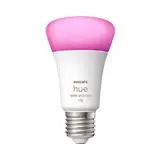
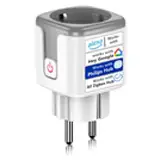
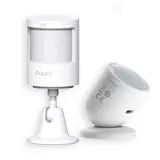
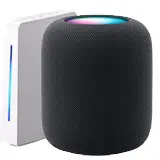
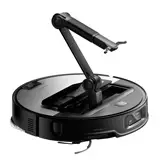

Can voice assistants help with pet care?
Imagine your voice assistant helping you take care of your pet? It sounds like science fiction, but technology is advancing by leaps and bounds. They're not just for playing music or reminding you of appointments anymore. Now, they can become important allies in the well-being of our furry, feathered, or scaled companions.
How Voice Assistants Are Revolutionizing Pet Care?
Voice assistants, like Alexa, Google Assistant, or Siri, offer innovative solutions to simplify and improve the lives of pet owners. From reminders to entertainment, the possibilities are vast. Let's explore them!
Smart Reminders for Optimal Care
Are you forgetting when the flea pill is due or the vet appointment? A voice assistant could be the answer. Set up custom reminders for:
Also, you can create complex routines. For example, "Alexa, Toby's walk time." This could trigger a series of actions: a reminder, relaxing music for the dog (if going out stresses him), and even a notification to your partner to get ready too.
Remote and Controlled Feeding
"Feeding is key to your pet's health. Voice assistants integrate with automatic feeding devices, offering precise control over portions and schedules. Imagine this:"
Some smart feeders even have cameras. That way, you can watch your pet eat and make sure everything's okay! That peace of mind is priceless.
Entertainment and Mental Stimulation
Pets need entertainment too. A voice assistant can play calming music, audiobooks, or even nature sounds to soothe separation anxiety or simply enrich their environment. There are even skills designed specifically for pets, with interactive games and sounds that appeal to them.
Examples:
Health and Wellness Monitoring
Even though they can't diagnose illnesses yet, some devices, paired with voice assistants, let you monitor important aspects of your pet's health:
Please remember this information is supplementary. Always consult your veterinarian for an accurate diagnosis.
Best Practices for Integrating Voice Assistants in Pet Care
To make the most of voice assistants for your pet care, follow these tips:
Choose the Right Voice Assistant
"Alexa, Google Assistant, and Siri each have their own strengths. Research which one best fits your needs and the devices you already use. Consider:"
Customize Voice Commands
Use simple, clear names and commands that your pet can link to specific actions. For example, instead of saying "Alexa, turn on the food dispenser," you could say "Alexa, Fido's dinner time." Repetition and consistency are key.
Consider your pet's sensitivity to sound.
Some pets can be sensitive to loud noises or unfamiliar voices. Introduce the voice assistant gradually, adjusting the volume and avoiding abrupt commands. Observe your pet's reaction and adapt your approach as needed. If they're showing signs of anxiety or fear, cut back on using the voice assistant.
Protect Privacy and Security
Check your voice assistant's privacy settings and make sure only you can access commands related to your pet's care. Avoid sharing sensitive personal information. Also, consider physical safety: ensure cords and devices are out of your pet's reach.
Combine Technology with Traditional Care
Voice assistants are a valuable tool, but they don't replace the love, attention, and direct care your pet needs. Keep dedicating time to play, walk, and socialize with your companion. Observe their behavior and consult your vet regularly. Technology complements traditional care, it doesn't replace it.
Concrete Usage Examples
To give you a better idea, here are some scenarios of how you can use a voice assistant for your pet care:
Scenario 1: The Hardworking Owner
Juan works long hours. He uses a voice-controlled automatic feeder to make sure his cat, Salem, eats at the right times. He set a reminder to refill the feeder every three days, and he uses a camera built into the feeder to watch Salem eat while he's at the office. In the evening, when he gets home, he asks Alexa to play relaxing music for cats while he makes dinner.
Scenario 2: The Forgetful Owner
Maria always forgets when her dog, Buddy, is due for his shots. She set up a recurring reminder in Google Assistant to schedule the vet appointment every year. Also, she uses a smart collar that tracks Buddy's activity. Daily, she asks Google Assistant how much physical activity Buddy has done that day.
Scenario 3: The Owner with a Mischievous Cat
Carlos has a cat, Misifus, who's really energetic. He uses an Alexa skill that plays bird and mouse sounds to keep Misifus entertained when he can't play with him. He also has a voice-controlled treat dispenser that lets him reward Misifus for good behavior, even when he's in another room.
What's in store for the future of pet care with voice assistants?
The future of pet care with voice assistants is promising. We can expect:
Conclusion: A More Connected Future, Attentive to Animal Welfare
Voice assistants are changing how we care for our pets. They offer practical and convenient solutions to simplify our lives and improve the well-being of our animal companions. From reminders to entertainment, the possibilities are vast and continue to expand. However, remember that technology is a supplementary tool. Love, attention, and direct care are essential for a happy and healthy pet.
Are you ready to integrate a voice assistant into your pet's care? Start today! Explore the available options, customize the commands, and see how technology can make life easier for you and happier for your furry, feathered, or scaled companion. Share this article with other pet lovers and comment on your experiences. Together, we can create a more connected and attentive future for animal welfare!
Related Posts
Activity trackers for dogs and cats: Are they worth it?
Ever wondered what your dog or cat does when you're not home? Does it sleep all day or dedicate itself to exploring every corner? Pet activity sensors have become a popular tool for monitoring the well-being of our furry companions. But are they really worth the investment? …
Smart cameras to monitor your pets when you're away from home.
Worried about what your pets do when you're not home? Curious if your dog is barking excessively or if your cat is sleeping peacefully on your favorite armchair? The solution is here: smart pet cameras! These cameras aren't just for watching your furry friends, they're a powerful tool…
How to set up food and water alerts for your pets
Worried about forgetting to feed or water your pet? You're not alone! Modern life is hectic, and sometimes even the most important tasks get away from us. But don't worry, we have the solution! In this article, we'll walk you step-by-step through setting up food and water alerts for your pets, ...
Smart pet feeders: How to feed your pet remotely
Worried about leaving your pet home alone? Feeling guilty about missing meal times? Worry no more! Smart pet feeders are the perfect solution for feeding your furry friend remotely. With today's technology, it's easier than ever to keep your pet healthy and…